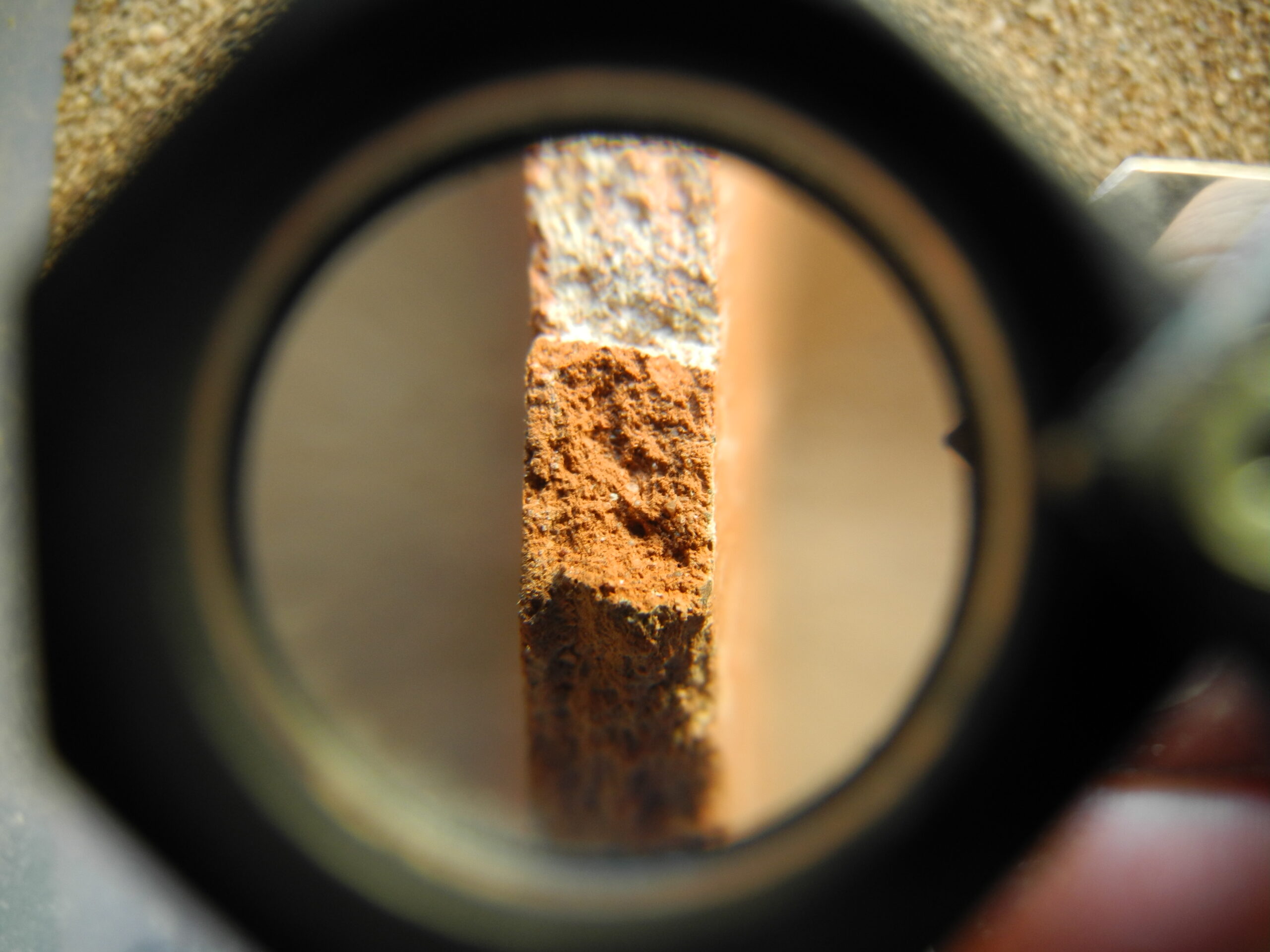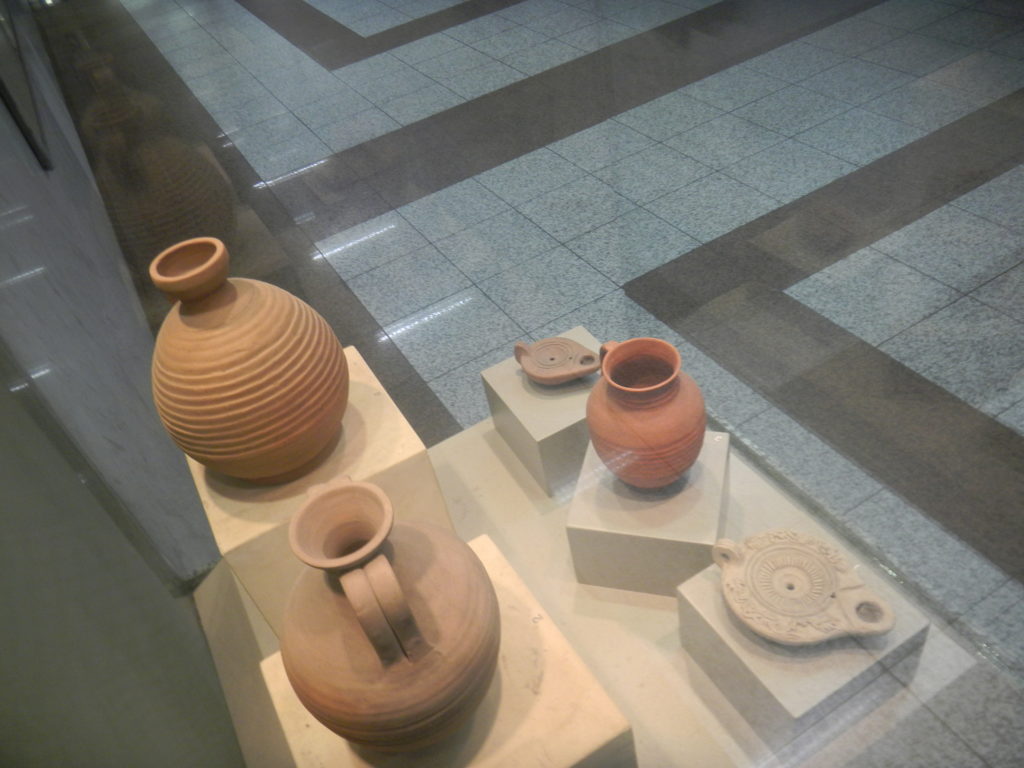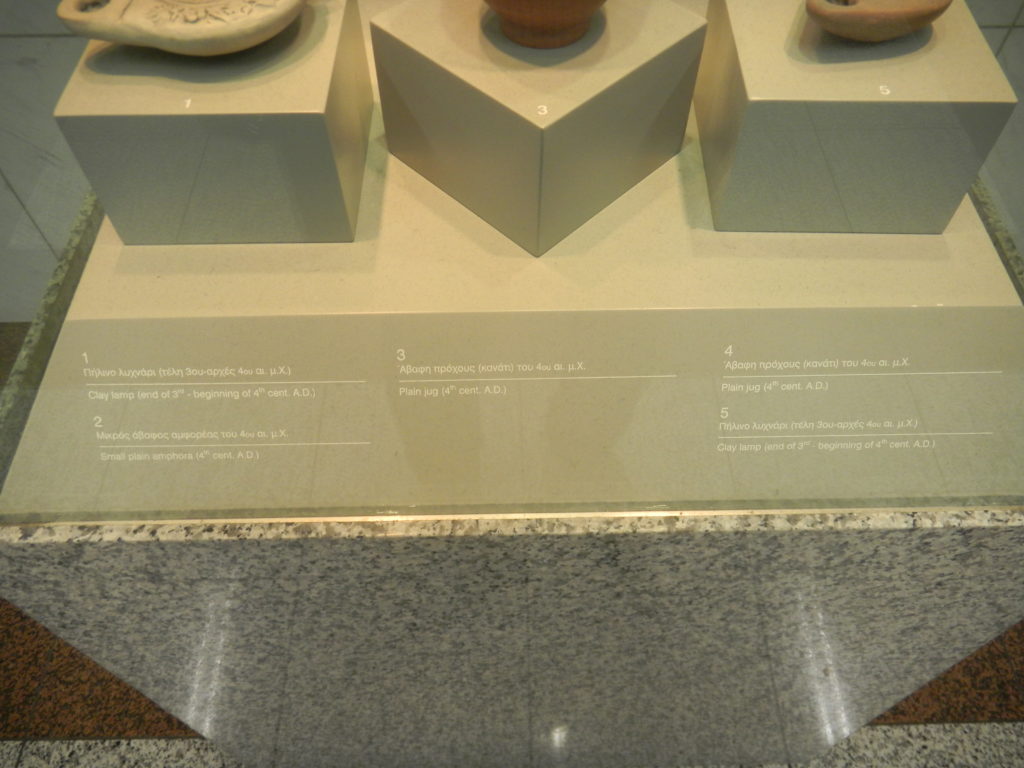On 16th July we’re headed to Rethymno for a workshop on Byzantine cities in Crete. Our participation was a last minute deal but I thought it would be useful to provide an overview on the entire city of Gortys, not limited to the GQB area, from the point of view of a ceramic specialist. What follows is a short summary of my talk. Tomorrow I will post a summary of the workshop and some conclusions about my own talk.
At Gortys, there is a recognisable occupation phase in the 8th century: we have evidence in the Pretorio, the Byzantine Houses and the Byzantine Quarter, the Pythion, the Mitropolis basilica, the Agora, possibly the Acropolis and even some rural sites such as the small farm of Orthipetra in the Mitropolianos valley and Chalara near Festos. In short, almost everywhere we’ve been excavating in the past 20 years we found evidence later than the 7th century, even without accounting for the prolonged use of some ceramic items.
Therefore our research question should not be whether the city is still alive in the 8th century but how we understand the life in Gortys by means of archaeological indicators such as ceramic finds.
In the past few years, we have collectively published ceramic and numismatic evidence that contradicts the traditional date of 670 AD for an earthquake – pushing some 50-60 years later a possible catastrophic event (some publications are shy about this, though). When we speak of the 8th century in Gortys it is useful to distinguish into a “long 7th century” that lasts until this event and the remaining decades of the 8th century, according to both the ceramic and numismatic evidence. The period after this event is usually mentioned as “VIII e IX secolo” mainly because we have to accomodate for the 826-829 AD date from the written sources about the “Arab” conquest of Crete. I’ll leave a discussion of the 9th century for a next occasion, but the same approach can be used.
Part of our issues with the 8th century derive from the impact that earlier works like Gortina II or Gortina V had on the following studies, with their typological approach. It is only recently that we have collectively started focusing on contexts as atomic units of study, at least in some cases.
The main ceramic indicators we have are:
- Globular amphorae
- Sovradipinta bizantina
- Late Mediterranean fine wares
- Cooking wares
- Glazed wares
- Chafing dishes
- Oil lamps
Urban areas
The Pretorio, Byzantine Houses, Byzantine Quarter and Pythion are best considered as a single area, that had its main focus on the “Strada Nord” which crossed the urban area. Lots of excavations here!
The Mitropolis basilica is the most important religious area of the city. Recent excavations on the outer part of the absidal area have given important evidence.
The Agora was excavated in the 1990s but only recently published. Apart from a significant amount of Medieval material, including Byzantine amphorae, there is a deposit (“C”) dated from this period, possibly from the same destructive event seen elsewhere in Gortys.
The Acropolis was excavated in the 1960s and saw only a small intervention in 2003. It took a few decades to realise that some of the decorated pottery identified as Minoan was in fact Byzantine. Without a reevaluation of the material, we are left with a weak basis to analyse the place that must have been the seat of the civil/military power from the late 7th to the 9th century, and only the occupation is certain, with architectural remains and at least one coin.
Main ceramic indicators
Globular amphorae are well known but on their own they provide little chronological detail. However, their recurring association with other indicators that have a more tight chronology is very interesting. Their source is commonly indicated as either Cretan or Aegean: we still lack a precise indication in this regard. Their abundance in this period all around Gortys, unparalleled by other amphora types, indicates that they were used primarily as a storage container, to stockpile liquids (wine?) in huge quantities – as much as 750 liters just in one building. Other amphorae that are quite numerous in this period are LRA 5/6 from Palestine and the Nile Delta region, and the LRA7 in some areas of the city.
The Sovradipinta bizantina is of limited interest as a general indicator for Crete, because it only circulates in the immediate vicinity of Gortys and only rarely found outside the Mesara. Its production starts at the end of the 6th century and goes on into the 7th and 8th century, apparently without any significant distinction in typology or decoration. Again, it is difficult to use this indicator alone to point to an 8th century date, even though ceramic evidence from the Praetorium points to a different chronology, mostly in the late 7th and 8th century. One thing is sure: the Sovradipinta bizantina was never meant to be a replacement for missing imports, since most of it is on closed forms like drinking cups, jugs, etc. that do not occur in the imported fine wares. Rather, we see decoration occurring on the formal repertoire of the local plain wares.
Traditionally, the end of trade in Mediterranean fine wares is dated at the end of the 7th century, to coincide at the very last with the Arab conquest of Carthage in 698. However, several authors agree that some productions could continue to be exported for some time in the 8th century, such as:
- the late African Red Slip D3 / D4, form 107 and 109 described by Bonifay;
- Late Roman D / Cypriot Red Slip, form 9B described by Watson;
- Egyptian Red Slip wares? We seem to have a consistent presence of Aswan ware, a production that is little known outside Egypt and is dated to to 7th century.
In general, cooking pots of this period are frequently bag-shaped, in coarser, more fragile fabrics. Cooking pots made on the slow-wheel appear sporadically, like a paradigmatic example of simplified ceramic production or even a comeback of domestic modes of production – at the same time they challenge our stereotyped view of pottery as typology and require a technological study that goes beyond traditional archaeometric provenance analysis. It is difficult to tell whether there were different cooking habits since most publications lack the level of detail that is needed, such as which parts of the cooking pot have traces of fire exposure, which have traces of dipper / κουτάλα, etc.
Glazed wares (the “Glazed White Ware” series 1) are the most recognisable finds of the period. While the coarser glazed cooking pots date already from the mid-7th in Constantinople, their fine counterparts seem slightly later according to the studies of Hayes. Some 9th century examples were already known since the 1980s in Gortys, but recently we have been finding more examples including the beautiful 8th century chafing dish decorated with fish and palm tree. Other known examples from Crete are from Pseira and Itanos. They could be interpreted as luxury items, but as with the imported wares we should be cautious to make an equation between archaeological rarity and actual social/economic value, since this production is very rare all over the Byzantine Empire.
Chafing dishes / σαλτσάρια come also in coarse fabrics, at least in two separate contexts from the BQ and the Agora. Since we have so few examples of this type, it is useful to see that the culinary habits linked to this new type of cooking vessel are not limited to glazed dishes (that could easily be gifts or decorative items). There’s room for discussing the fact that this habit appears in Gortys at the same time as other important centres of the Byzantine Empire, with simplistic explanations like the military or new civil authorities.
Finally, oil lamps. The “juglet” lamps are well known, especially type I. It seems that type II could be more widespread in the later period. Lamps in this period are less standardised, but in Gortys we don’t see hand-made lamps of the simpler open types. A separate discussion is needed to take into account the impact of glass on lighting of interior spaces, and we still don’t have collected the necessary data from our excavated material.
Conclusions
I’d like to leave my conclusions blank for tomorrow’s post.
The cover image is an African Red Slip sherd, form Hayes 109B, in D3 fabric, photographed through a magnifying lens (GQB CER 746.2).
































